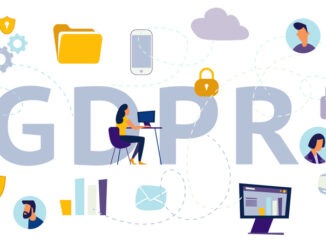In the realm of school business leadership, the responsibility of safeguarding children and young people is paramount. Whether it’s a routine event or a special activity, school business leaders play a crucial role in ensuring the safety of all participants. Let’s explore key considerations and actionable steps to guarantee a secure environment for everyone involved
CREDIT: This is an edited version of an article that originally appeared on NSPCC Learning
Safer recruitment: Building a trustworthy team
To create a secure environment, school business leaders should adhere to rigorous safer recruitment procedures. This encompasses not only the school’s staff and volunteers but also extends to sub-contractors and individuals from partner organisations. Collaborate with external entities and ensure their recruitment procedures align with your own standards. Obtain written confirmation of proper recruitment processes and ensure that anyone involved in regulated activities undergoes vetting and barring checks.
Equip all staff, volunteers, and sub-contractors with child protection training to enhance their ability to recognise and respond to concerns effectively. Develop a comprehensive code of conduct for all adults involved in the event or activity. Ensure everyone understands and agrees to follow these guidelines to maintain a secure environment.
Safeguarding and child protection plan: A comprehensive approach
Collaborate with the nominated child protection lead and key individuals from other organisations to create a safeguarding and child protection plan for the event. This plan, or welfare plan, should cover overarching policies, the chain of responsibility, response protocols for concerns, procedures for handling abuse allegations, whistleblowing procedures, and contact information for safeguarding advice during the event.
Lost or missing children: Proactive measures
Implement measures to prevent children from getting lost and establish clear procedures for handling such situations. Consider designated meeting points, communication strategies with parents or carers, verification of adult identities, and coordination of initial searches.
Photography and filming: Balancing celebration and safety
Acknowledge the desire to capture moments but be mindful of child protection and safeguarding issues surrounding images of children. Put measures in place to ensure the safety of children, young people, and their families during photography and filming.
Post-event review: Continuous improvement
Allocate time post-event to review proceedings and identify areas for improvement in future practices. Share information about the event with parents, carers, staff, and volunteers, emphasiseding the importance of everyone’s contribution to safety.
Consent: A crucial step
Obtain written consent from parents or carers for their child’s involvement. Seek consent from children and young people when applicable. Utilise separate consent forms for each activity to cross-verify emergency contact details and any medical conditions.
Emergency information: Preparedness is key
Compile a list of emergency contact numbers for each child and ensure its accessibility to responsible staff or volunteers. Educate group leaders on emergency service contact procedures and provide parents and carers with emergency contact information.
In anticipation of any additional support needs for each child, ensure that staff and volunteers are aware in advance.
Record keeping: Documenting securely
Keep written records, including consent forms, medical information, and records of child protection concerns, securely. Implement necessary health and safety measures, including appropriate first aid, fire safety awareness, venue assessments, and compliance checks for third-party providers.
Insurance and compliance: Safety nets
Ensure adequate insurance coverage and compliance with safety standards. Collaborate with umbrella bodies or local councils for voluntary service for additional information on insurance for voluntary and community events.
Communication: Transparent and inclusive
Brief staff, volunteers, parents, and carers on health and safety risks and mitigation strategies. Clearly communicate all activities, potential risks, and safety measures to parents, and be explicit about expectations, especially in situations where parents remain responsible for their children during the activity.
In the multifaceted responsibility of ensuring safety at school events, collaboration, transparency, and continuous improvement are key. As school business leaders, embracing these principles guarantees a secure and enriching experience for all participants.



Be the first to comment